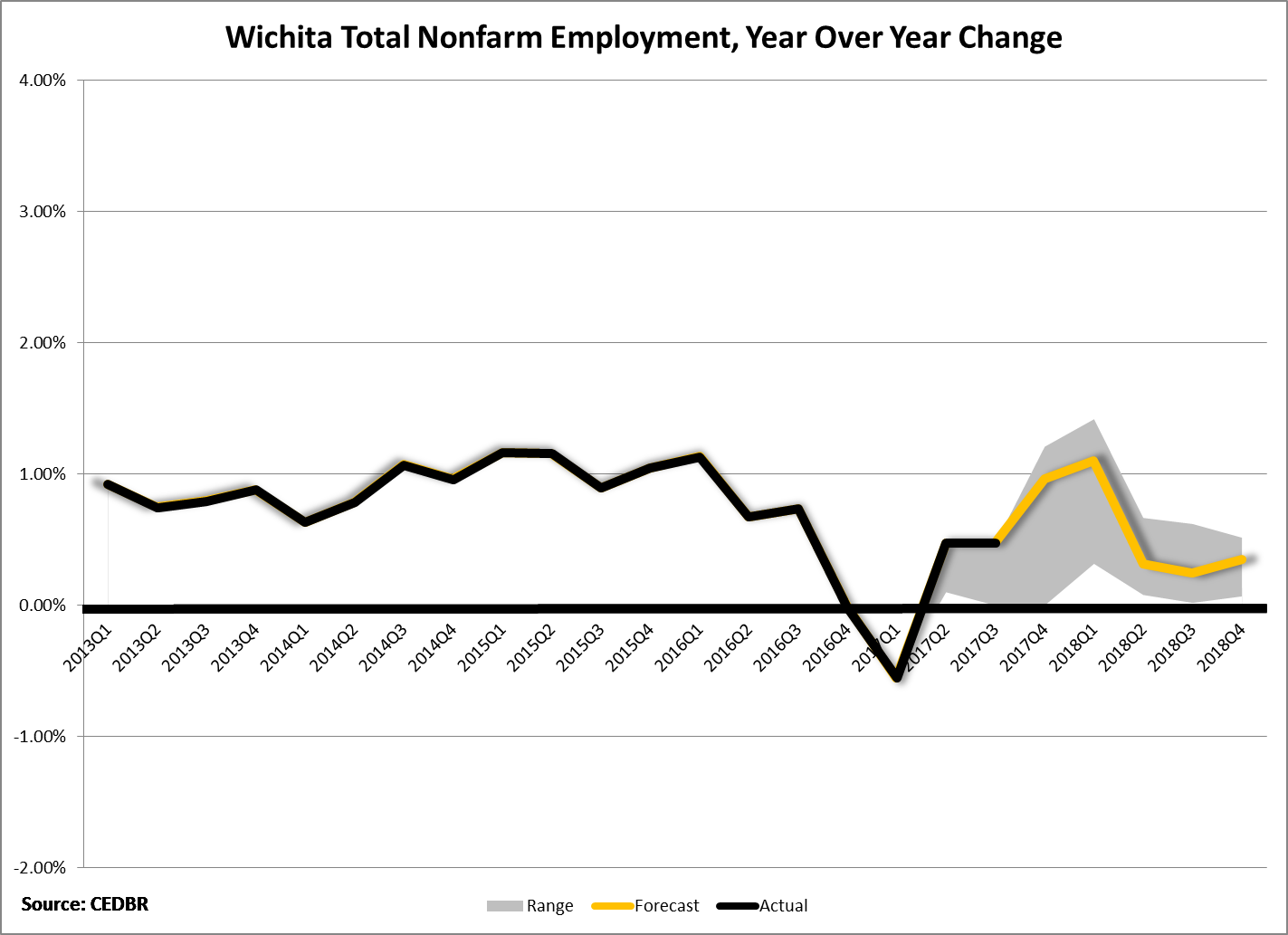Wichita Employment Forecast
Released May 23, 2018 (See previous version.)
In 2017, total non-farm employment in the Wichita metropolitan area contracted by 0.9 percent, a decline of 2,500 jobs. In 2018, Wichita employment is forecast to increase by approximately 1,200 jobs, growing 0.4 percent, with an expected growth range between 0.2 percent and 0.6 percent. While this is expected to be higher than Wichita’s 2017 employment growth, it is still projected to be lower than growth in the area from 2012 to 2016, which averaged 0.8 percent.
- The production sectors are projected to remain approximately flat in 2018. Natural resources and construction employment is forecast to increase by less than 100 jobs while manufacturing employment is projected to decline by less than 100 jobs.
- The trade, transportation and utilities sector is forecast to increase by 0.4 percent. Job gains are expected to be concentrated in the transportation and utilities sector, while the retail trade and wholesale trade sectors are predicted to have modest employment declines.
- The service sectors are expected to have the fastest employment growth in 2018, expanding by 0.7 percent. This growth is projected to be largely concentrated in the leisure and hospitality sector, which is forecast to increase by 2.2 percent, adding over 700 jobs. The professional and business services sector and education and health services sector are both projected to increase by approximately 100 jobs.
- Government employment is expected to add over 100 jobs in 2018, expanding by 0.3 percent. This growth is predicted to be focused in the local government sector, while federal and state government employment are forecast to remain relatively flat.
Nationally, real GDP grew 2.3 percent in 2017, which was primarily driven by increases in personal consumption expenditures and private investment. National employment increased by 1.6 percent in 2017.
| DOWNLOAD PDF VERSION |









